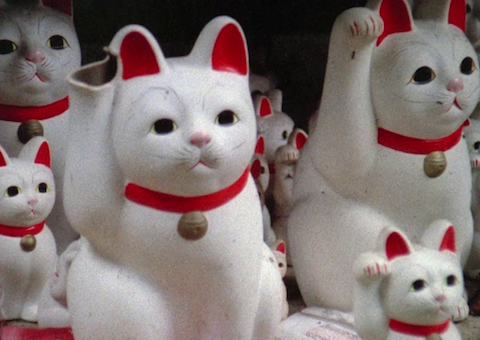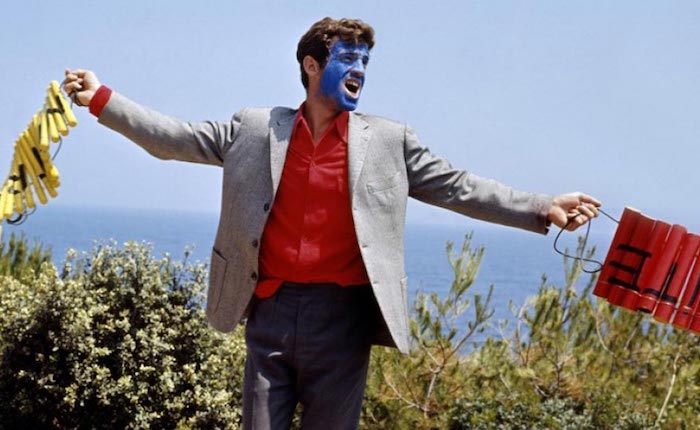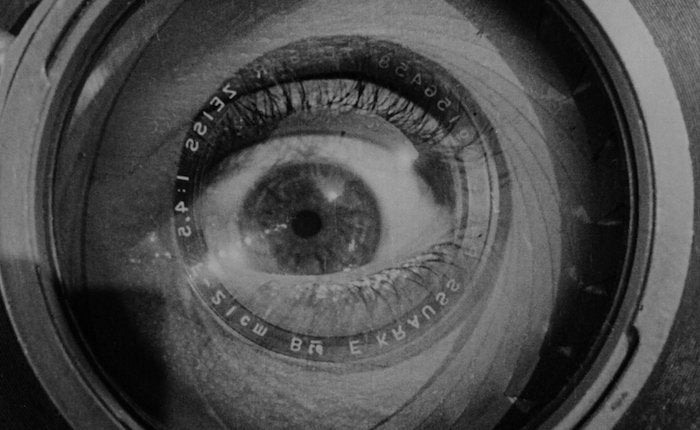
Sans soleil (1983)
For decades, I’ve been interested in the essay film, ever since I fell in love with Jean-Luc Godard’s work from the 1960s, like Pierrot le fou (1965), Two or Three Things I Know About Her (1967), but especially since the 1990s, when I wrote about Godard’s colleague Chris Marker, whose Sans soleil (1983) is a masterpiece of the genre. Recently, I discussed Saul Bass’ Why Man Creates (1968) as an essay film. But is it a genre? Straddling documentary and fiction, the subjectivity of the author and the objectivity of the filmed image, vacillating between image and sound, visuality and the word, essay films in many ways defy definition. Jean-Pierre Gorin, himself a film essayist, writes in Essays on the Essay Film (ed. Nora M. Alter and Timothy Corrigan, Columbia University Press, 2017): “They come in all sizes, shapes, and hues – and they will continue to do so... How can one even attempt to draw its floor plan, sketch its history and catalog the idiosyncratic products that appear in its inventory?” (p. 270).
Such semantic nebulousness already held true for the literary essay, as this anthology documents. Max Bense notes that essays always imply a level of experimentation, because they are exploring various forms of subjectivity. Similarly, the essays in this volume experiment with possible definitions of film essays. Essays on the Essay Film is accordingly divided into four sections: 1. Theoretical essays on the essay as a literary form by Georg Lukács, Robert Musil, Max Bense, Theodor W. Adorno and Aldous Huxley. 2. Previously published essays on the essay film by Hans Richter, Alexandre Astruc and André Bazin. 3. Analytical essays by Phillip Lopate, Paul Arthur, Michael Renov, Timothy Corrigan and Raymond Bellour. 4. Essays by filmmakers of the form, including Gorin, Hito Steyerl, Ross McElwee, Laura Mulvey and Isaac Julien.

Pierrot le fou (1965)
The editors make a wise decision to include writings on the literary essay, since many of its characteristics can be applied to essay films. Georg Lukács, for example, supposes that the essay is not an act of creating the new, but rather only of reconfiguring previously known information. Max Bense defines essays as a form of experimental writing that eschews absolute statements in the interest of exploring parameters and possibilities. Theodor Adorno takes Bense a step further by connecting the essay to anti-Platonic values, such as the ephemeral, the transitory, and the fragmentary. Given the ambiguity of the image, the push and pull between the filmmaker’s subjectivity and the objectivity of the image, are not such values integral to the cinema experience?
The earliest theoretical statements about the essay film come from experimental filmmaker and artist Hans Richter, who in his 1939 tract, Struggle for the Film: Towards a Socially Responsible Cinema, foresees a new form of documentary that has the ability to visualize thought. Alexander Astruc, an early member of the French New Wave, theorized the future of cinema in neither documentary nor fiction films, but rather in filmmakers who use the camera as a pen—le camera au stylo—for the expression of authorial subjectivity. Phillip Lopate, on the other hand, defines five characteristics for the essay film: 1. It has to communicate through language, whether spoken or written. 2. It must be the work of a single author. 3. It must set itself the task of solving a specific problem or problems. 4. It must be a wholly personal point of view. 5. It must be eloquent and interesting. Like Lopate, the late film critic and essayist Paul Arthur focuses on the film auteur, insisting that the essay film must give evidence a critical, self-reflexive author who is able to communicate through word and image.

Man with a Movie Camera (1929)
Timothy Corrigan contributes a historical analysis of the essay film, from Dziga Vertov to Agnès Varda, agreeing with Lukács’ thesis that the essay film indeed creates no new forms, but remixes and recontextualizes ideas that are already in circulation. The final part of his essay focuses on a close reading of Varda’s The Gleaners and I (2000).
Again and again the authors of the volume emphasize the essay film’s openness of form and always-tentative contours that defy any absolute definitions. Thus, the authors of Essays, as well as the even more subjective contributions of the filmmakers, discuss definitions and characteristics of a genre that isn’t one, unable or unwilling to draw definite conclusions. They are consciously circling around an indefinable object. The pleasure here is not to be found in the end goal, but rather in the intellectual journey. Nevertheless, it would have been nice if there had at least been agreement about when the essay film first appeared in film history, whether with Dziga Vertov’s Man with a Movie Camera (1929), Georges Franju’s Le sang des bêtes (1949) or Chris Marker’s Lettre de Sibérie (1958). A filmography of the essay film would have helped readers visualize the parameters of what films are considered essay films, a common ground for further discussion. Personally, I would have also liked to have read more about the aesthetics of the essay film, its visual and emotional appeal, not just intellectual pull. In retrospect, I remember the tactile sensuality of images in many of the films discussed, scenes that evoke emotion. I also question whether the essay or essay film is mainly a remix, and not in some way an independent creation of aesthetic value. Despite these slight reservations, this volume is eminently readable and a contribution to understanding a form of cinema that continues to morph and grow.
< Back to Archival Spaces blog






 Mobile Navigation
Mobile Navigation

